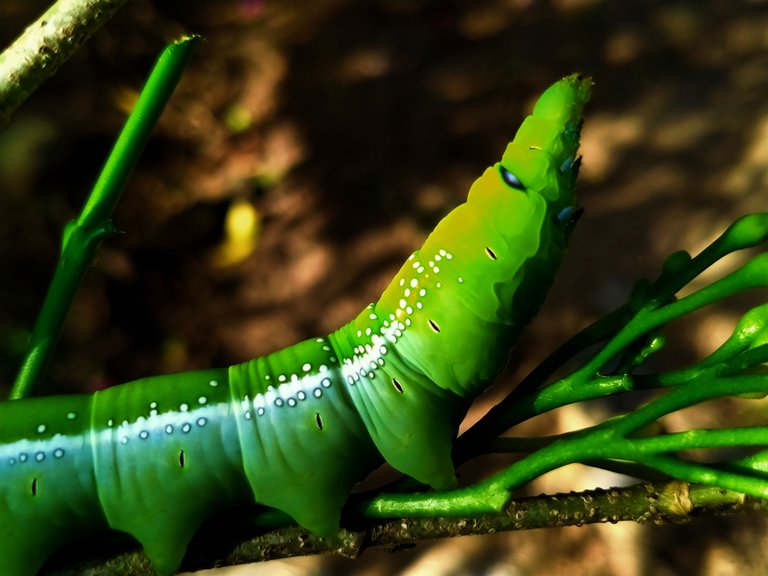
Manduca sexta or better known in Indonesia as "tobacco caterpillar" is a species of caterpillar that is very well known among researchers and insect hobbyists. In general, this caterpillar is very often found in tobacco and tomato gardens, but make no mistake, this caterpillar is also you can find various other types of plants including flowering trees such as jasmine, and today I found this caterpillar in my flower garden, this caterpillar is enjoying every fresh stalk of jasmine flower, this caterpillar has a large size and its face looks like a predator.
Manduca sexta is a species of caterpillar from the sphingidae family, this caterpillar is famous for its large body size and length reaching up to 10 centimeters, its body is bright green and there are also white oblique stripes on the sides of its body and there are also horns at the end of its tail, and It also gets the cool name "horned predator", the adult phase of Manduca sexta is a tobacco sphinx moth that has grayish wings with complex motifs.
Initially Manduca sexta were found in warm climates such as North and South America, they usually live in agricultural environments and gardens, where they eat plants from the Solanaceae family including tobacco and tomatoes, but in some cases these caterpillars are found on various Other types of plants such as jasmine, cotton trees and legumes can be alternative sources of food when host plants are not available.
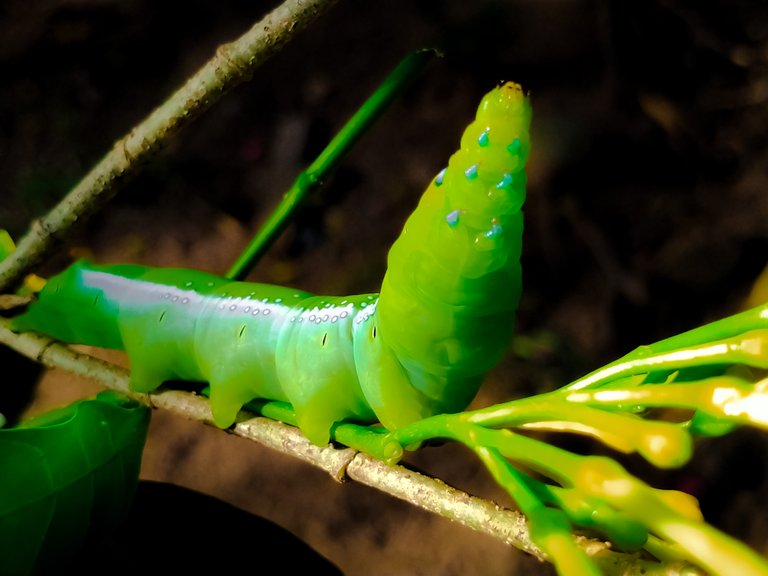
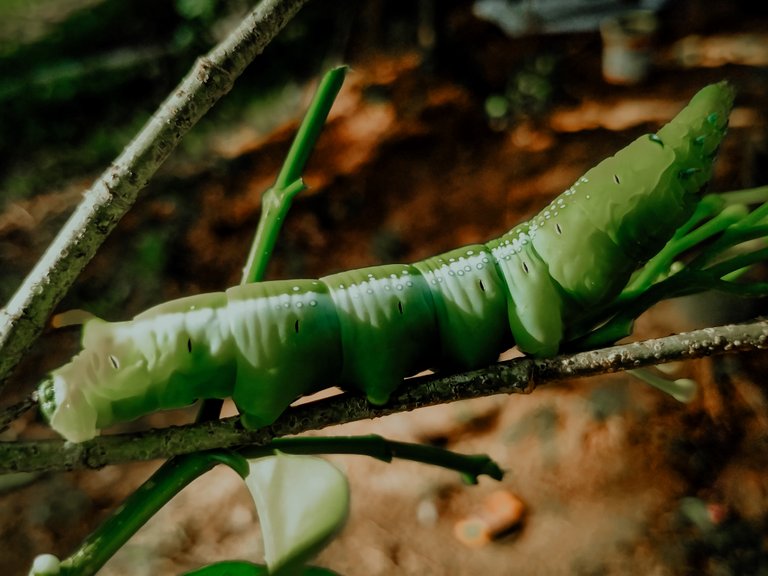
Manduca sexta (or better known as the tobacco hornworm) is a moth from the Sphingidae family which is now often found on the American continent. Commonly known as the Carolina sphinx moth (adult phase) and the tobacco hornworm (caterpillar phase), this moth is closely related and often confused because it closely resembles the tomato hornworm (Manduca quinquemaculata); where the two larvae of these moths eat the leaves of various plants in the Solanaceae family. Tobacco hornworms are sometimes kept as pets by children in many regions. The larvae of these species can be distinguished by markings, for example the tomato hornworm has eight V-shaped white markings without borders; while tobacco hornworms have seven diagonal white stripes with a black border. In addition, tobacco hornworms have red horns, while tomato hornworms have dark blue or black horns. Wikipedia
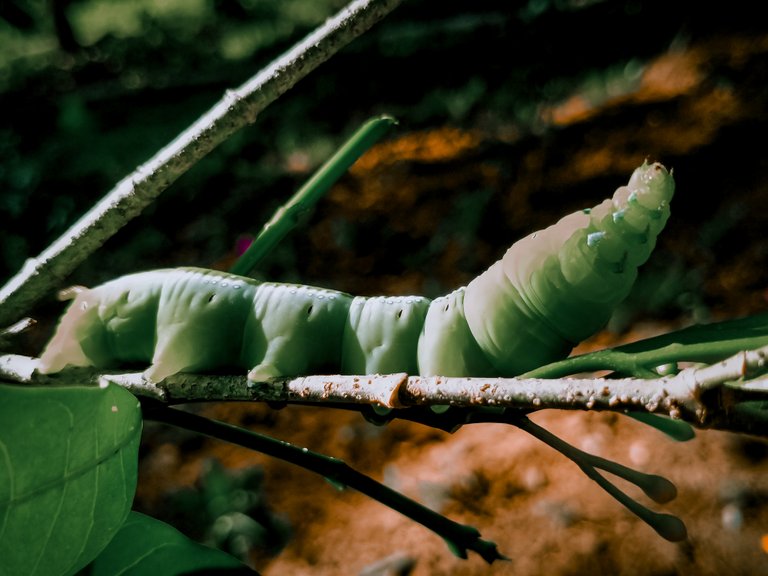
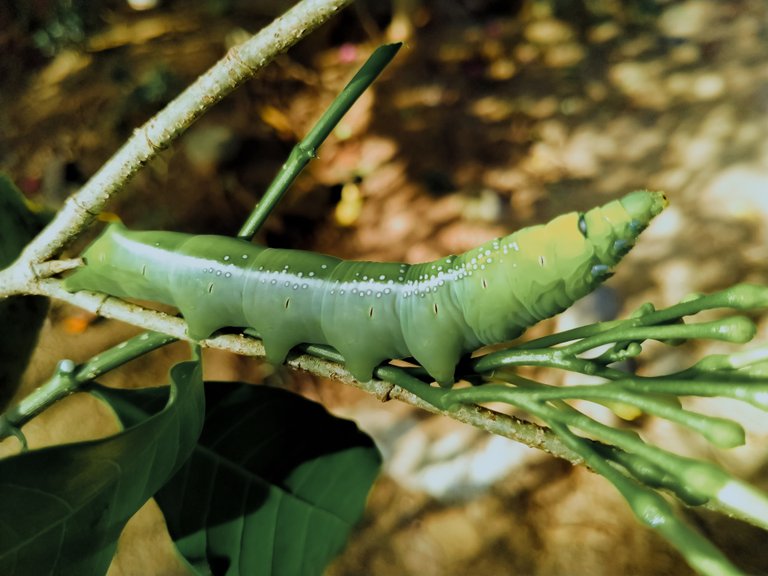
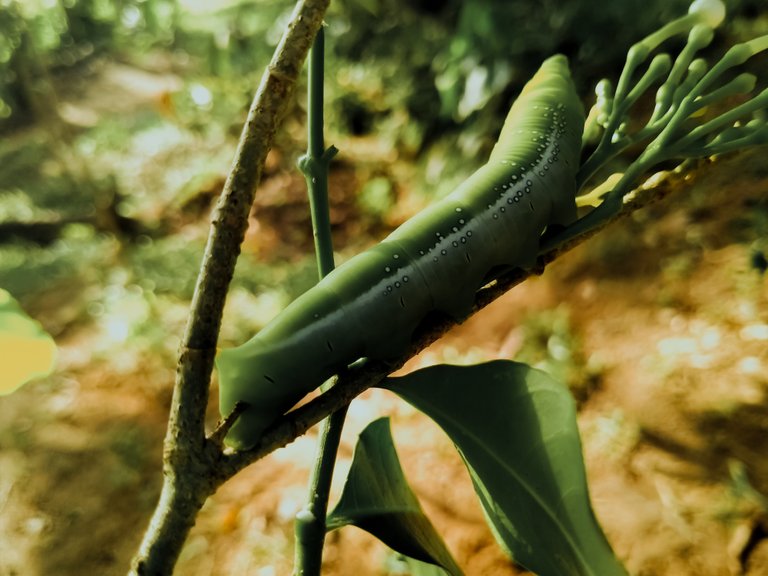
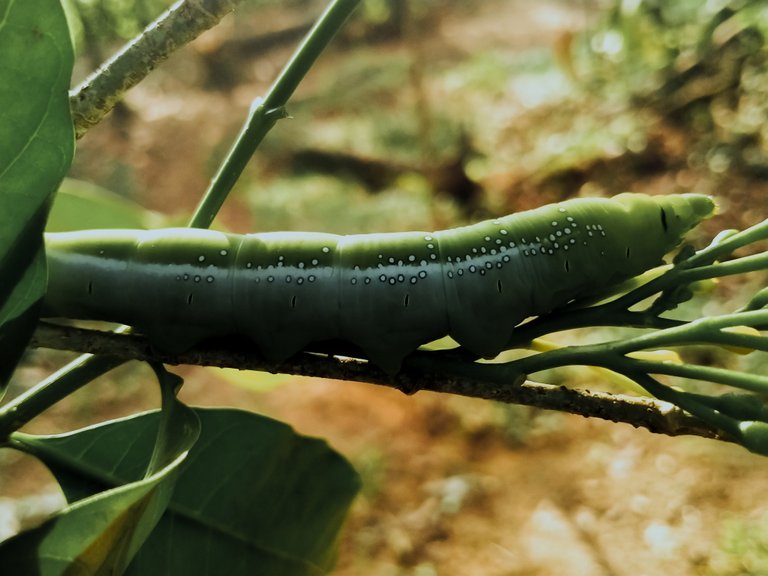

I could say that today is a lucky day for me, considering that finding a Manduca sexta on a jasmine tree is quite a rare discovery, because as you already know, jasmine is not the main host plant for this caterpillar, so this discovery can raise various questions and Hypothesis of behavior, food and ecological adaptations of these caterpillars.
perhaps the presence of Manduca sexta caterpillars on jasmine trees can have various impacts, as greedy caterpillars, Manduca sexta can consume all parts of the jasmine tree in a short period of time, and this will cause damage to my jasmine garden, from several cases that have been reported. I studied on the internet and found a heart-warming fact where experts stated that "the damage that will be caused by Manduca sexta is severe enough to make it difficult for jasmine trees to carry out photosynthesis", which in the end will disrupt plant growth and cause premature death.
finding Manduca sexta caterpillars on jasmine trees is an interesting event and provides new insight into the interactions between caterpillars and their host plants, although these caterpillars are usually found on tobacco and tomatoes, their presence on jasmine trees shows interesting ecological flexibility and adaptation, for hobbyists and Insect researchers, this discovery could be an opportunity to learn more about the behavior and adaptations of Manduca sexta caterpillars. On the other hand, it is also important for me to take appropriate steps to control the population so that it does not cause damage to the flower garden in my yard.
To control the caterpillar population on jasmine trees, maybe I can use the following tips;
Regular monitoring: The first thing I must do is check the jasmine trees regularly to detect the presence of these caterpillars, this can help prevent ecosystem damage caused by the greedy nature of these caterpillars.
mechanical control; Collecting and moving these caterpillars to another place manually can be said to be an effective method, especially when the caterpillar population is still limited, so it is still easy to move them to another place.
Using natural enemies; Establishing natural predators such as birds or other insects that hunt caterpillars can be an effective way to reduce the population of these caterpillars, and I am lucky that there are still lots of insect-hunting birds around.
yeah from my experience today, it is very important to inform those of you who cultivate various types of flowers, so now you are obliged to check your garden regularly so that you can detect any insects that start to come to your garden, especially the caterpillars that I found today, nature These greedy caterpillars will destroy the beauty of your garden landscape, so you must always be alert and have full control over your garden.